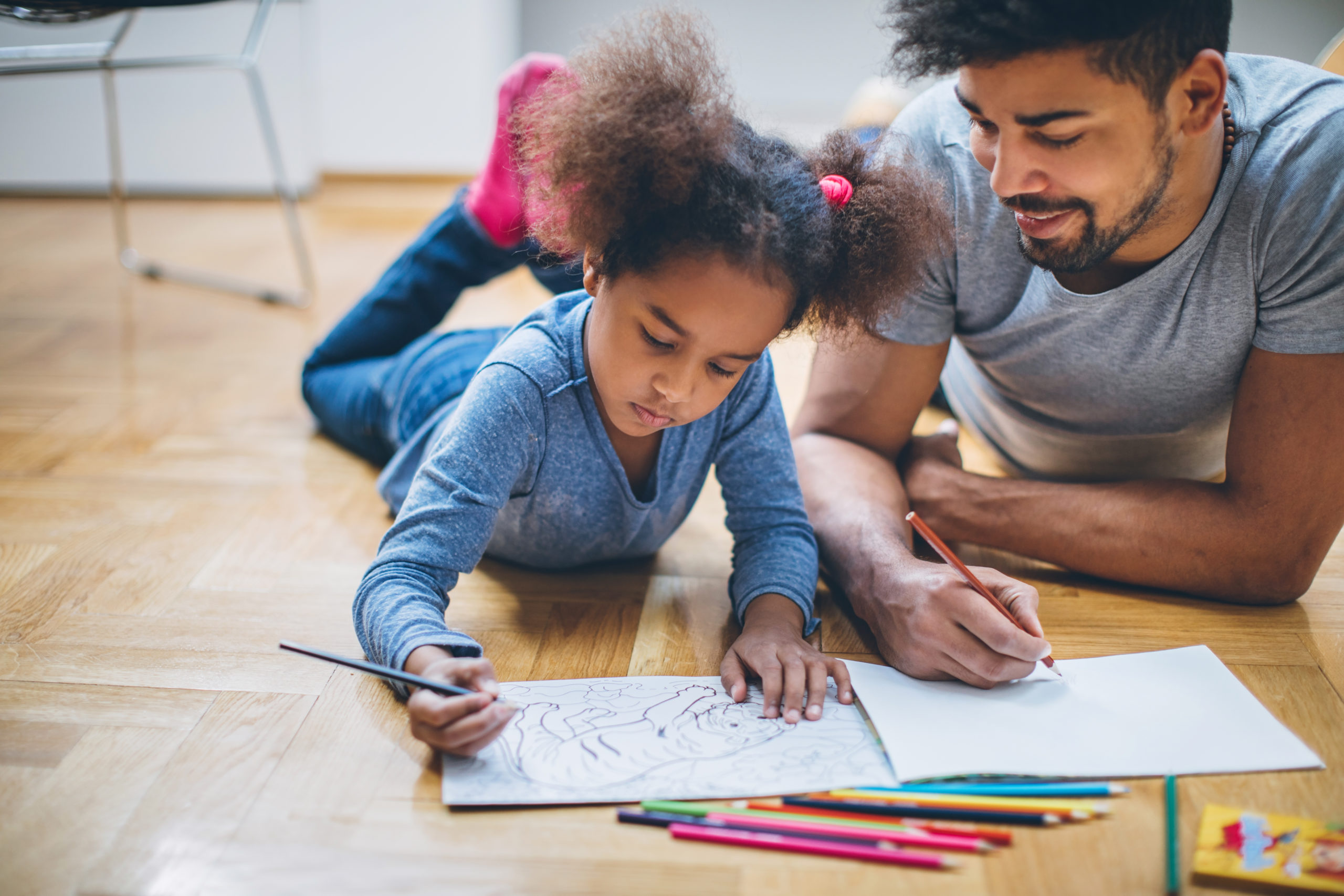By Chrysta Naron
“Plain paper is boring. I don’t know what to draw!” Hayes whined. My little friend wanted a coloring book—a Paw Patrol coloring book, to be exact. I understood his point of view; coloring books can be a lot of fun. But here’s the thing about standard coloring books. They don’t allow children to create their own ideas. And children naturally are wonderfully and wildly creative, even when they doubt themselves. So I devised a plan.
“Let’s make a surprise book!” I said to Hayes. He was intrigued. Here’s how we did it: Working together, Hayes and I created an entire coloring book of our own, plus a story to go with it. Through this process, Hayes practiced his pencil grip, writing, print knowledge, and storytelling, without even noticing it. Plus, best of all, his imagination was unleashed!
If this sounds like a winning way to spend a day with your child, let me show you how to create your own coloring book, below.
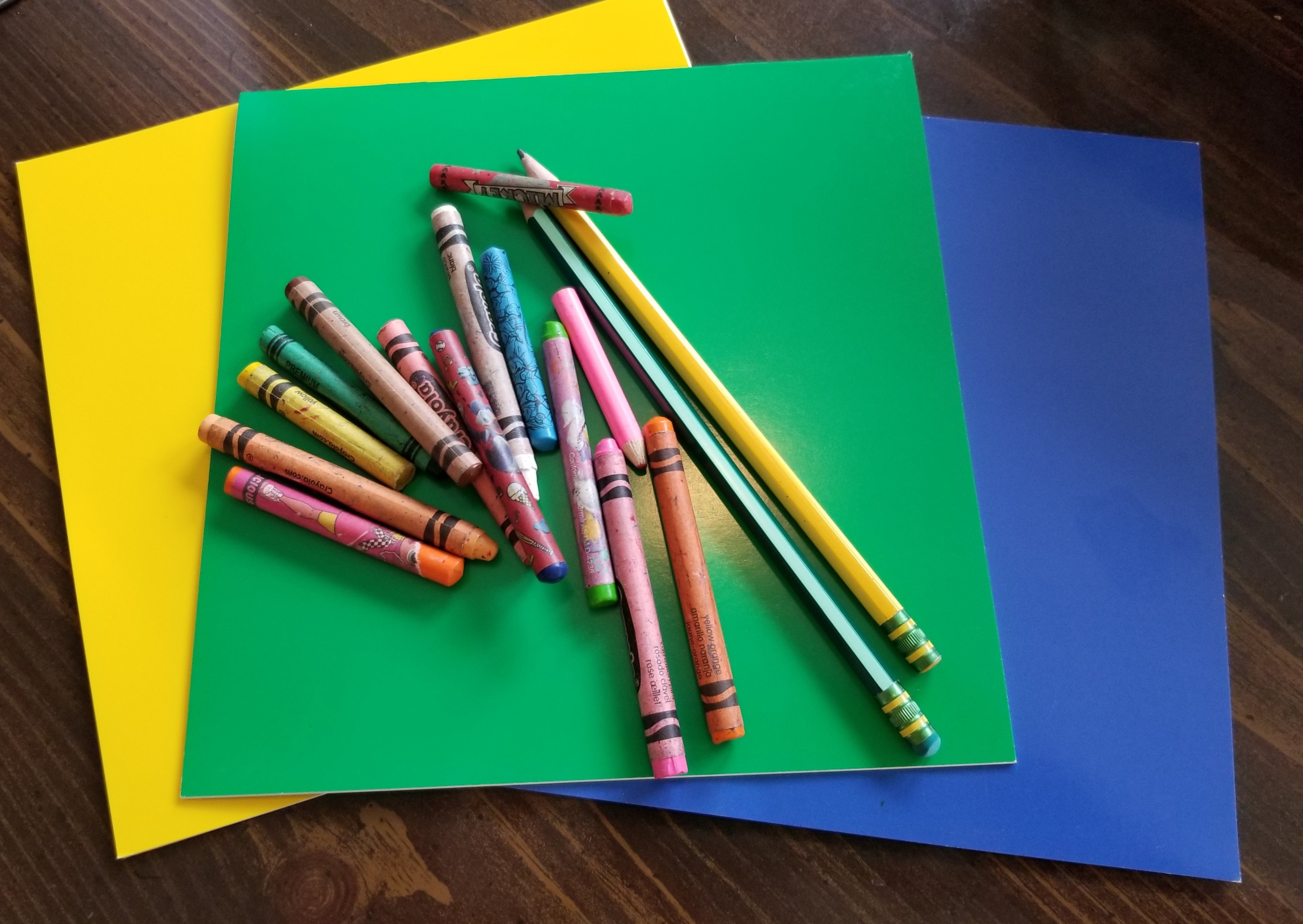
Materials:
- Journal with blank pages
- Crayons, markers, or pencils
Cost: $5
Step 1: On the first page of the book, draw a simple shape, such as a line, a curve, or a square.
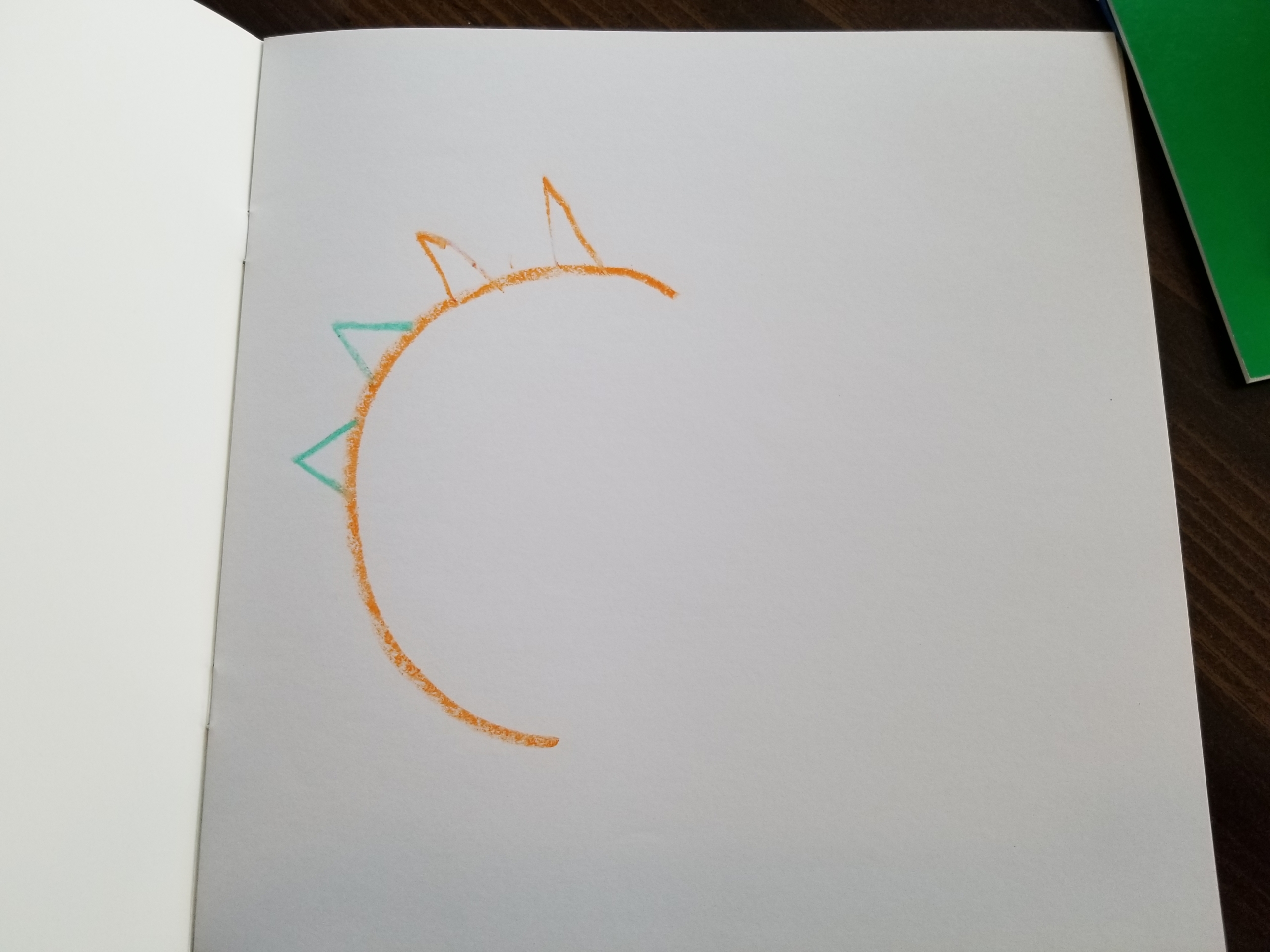
Step 2: Pass the book to your child and ask them to contribute some lines or shapes to the page. Don’t color them in just yet!
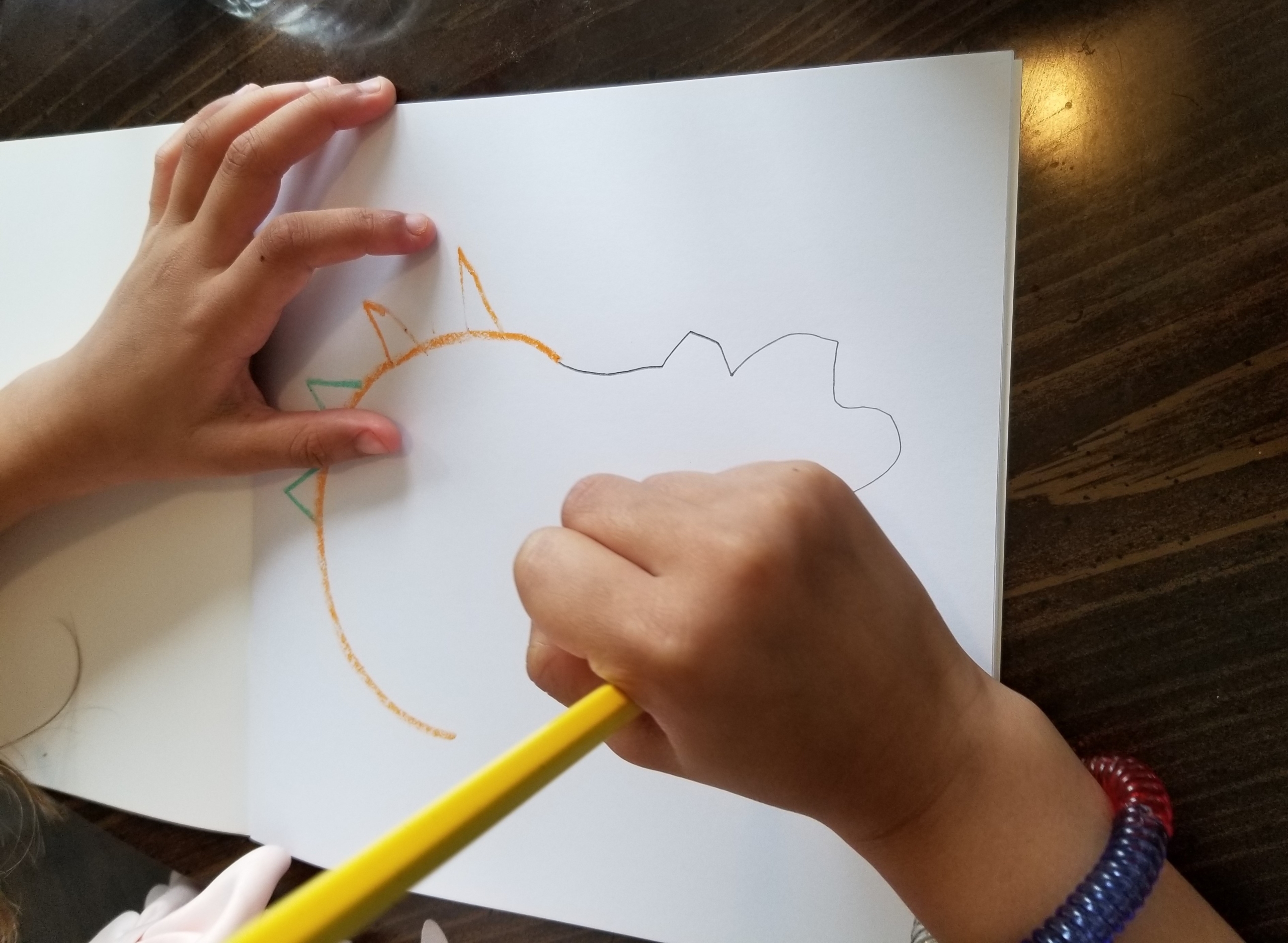
Step 3: After your child contributes their portion, pass the book back and forth until you both feel your picture is done!
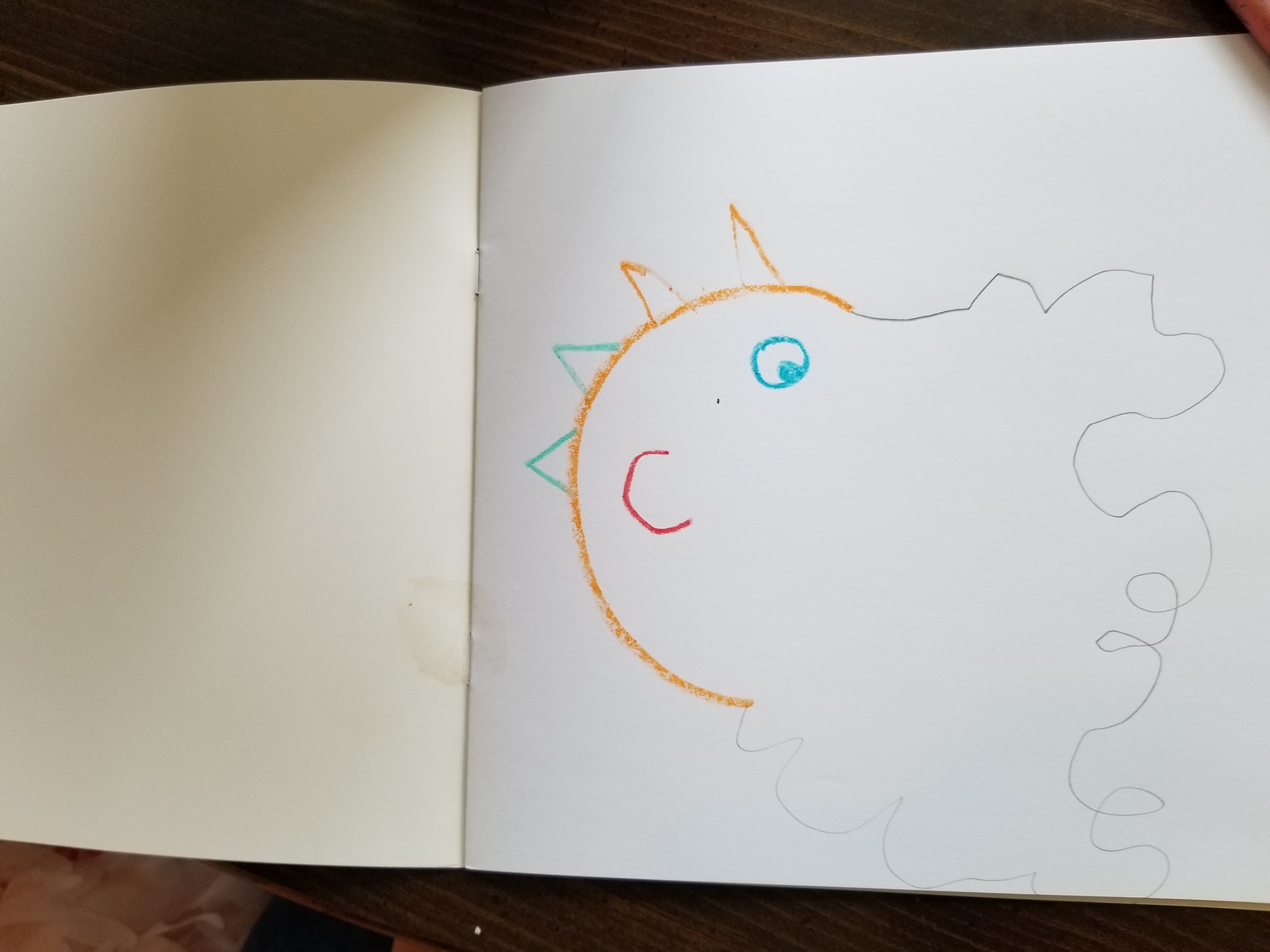
Step 4: Ask your child to title the picture or explain what’s going on in it. Write down the description on the page for younger children or less confident writers. For kids who are ready, let them attempt to write it themselves.
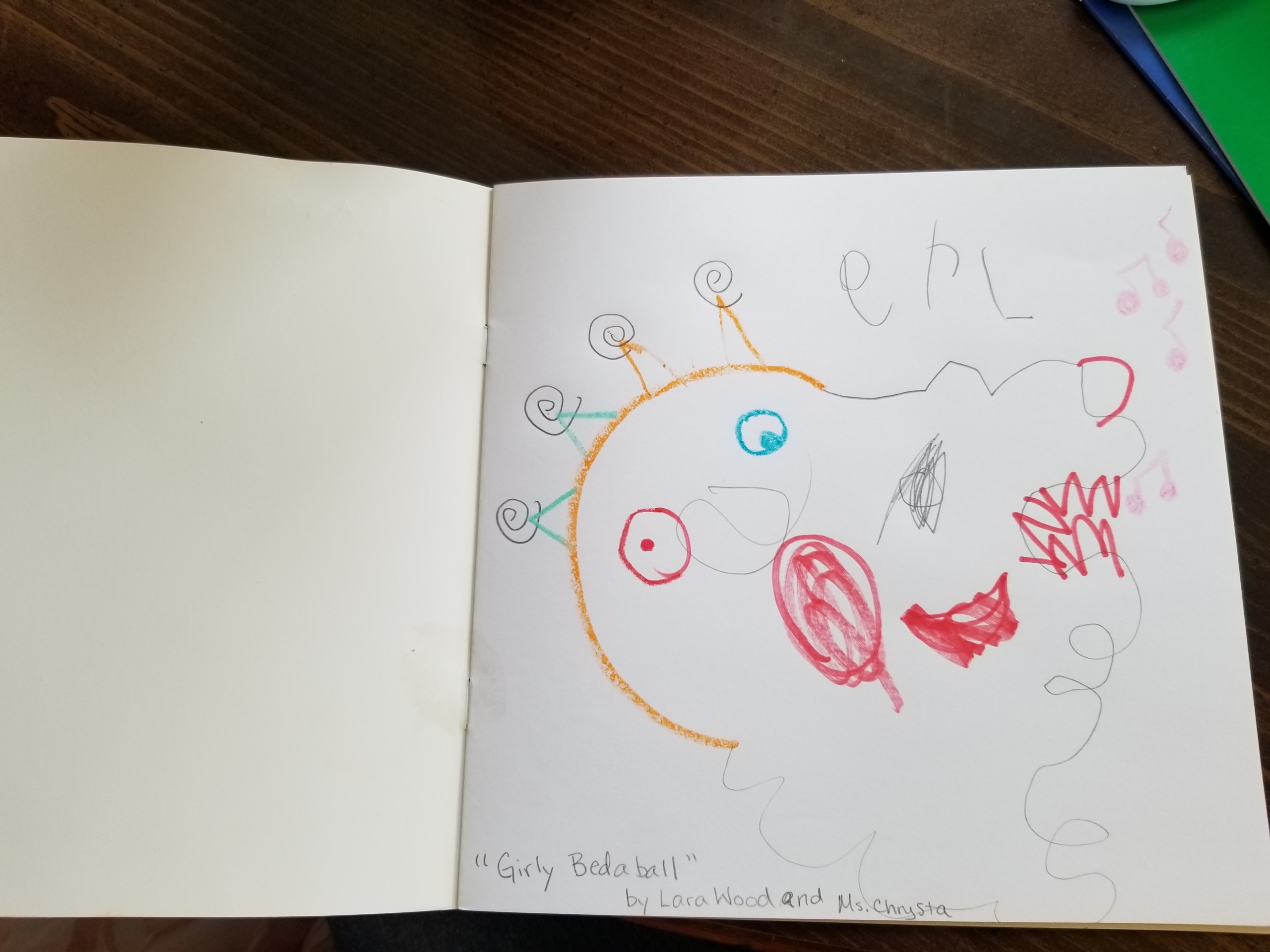
Step 5: Turn to a fresh blank page and start again! This time, let them go first. Soon, you’ll have a book filled with coloring pages.
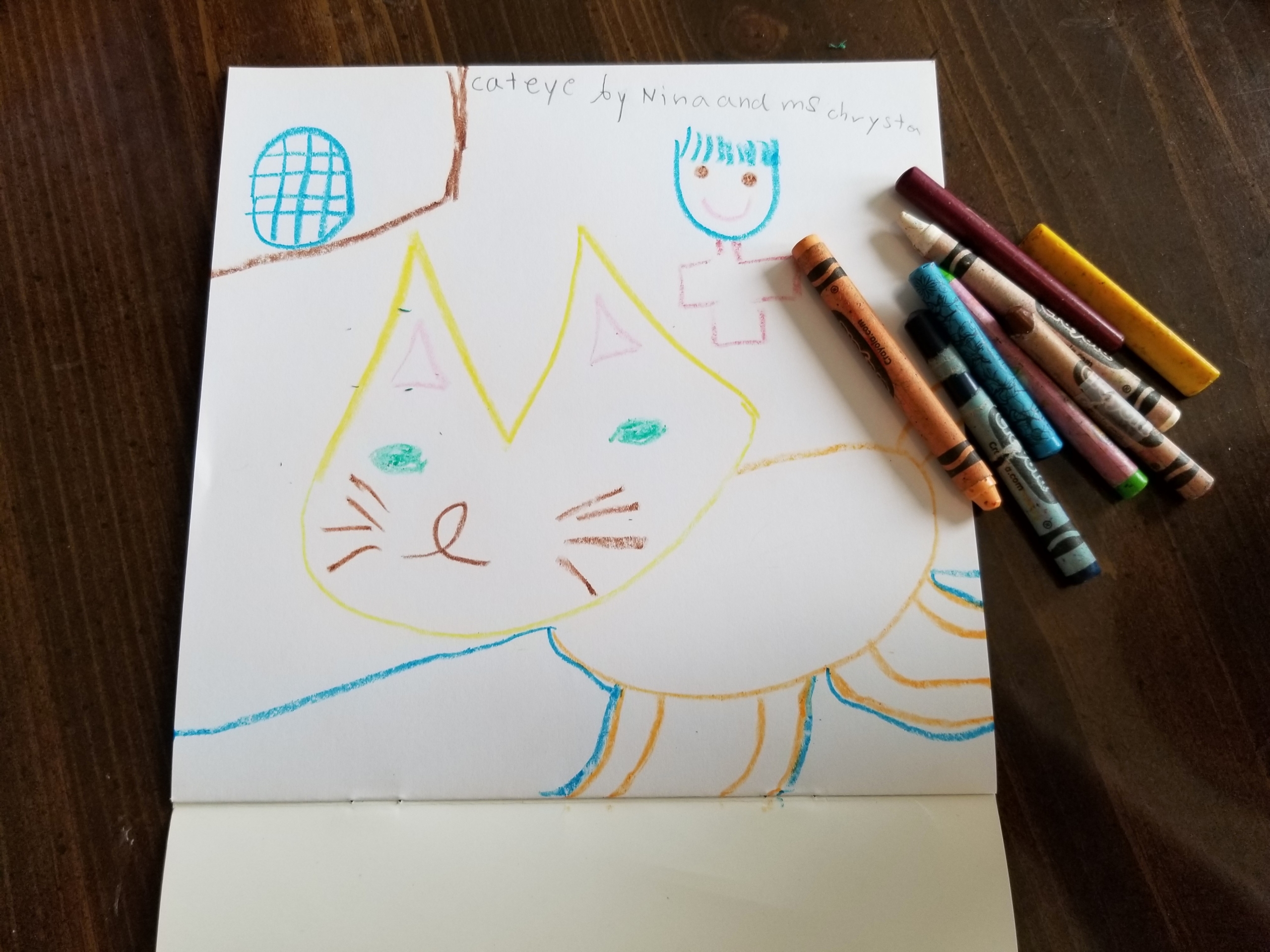
When you’re all done, you can take the book and review what you’ve made and written together. This helps to reinforce print knowledge, like learning that sentences go from left to right and that punctuation is found at the end of sentences. It also allows children to weave together a narrative, an important part of storytelling. It’s fun for them to recognize that they were able to create their own story, even when they at first had no idea where it was going to begin or how it was going to end!
After you’ve finished enjoying your great collaborative masterpiece, hand the book over and let your child color in the pages. While they color, you can revisit the story again. Do the pictures mean the same thing to them as they did the first time? Has the story changed? Do they want to add more to any pictures as they color them in? There are so many fantastic places this can go. And in the end, your child will learn more, express themselves more, and have a stronger memory with you from this homemade coloring book than from any coloring book you could ever buy.
By giving your child a slight nudge, with no desired outcome, you’ll open a door for them to explore their imagination and all that it has to offer their learning experience. What ideas will unfurl as you sit with one another and a blank piece of paper? The possibilities are endless.
Did you and your child create your own coloring book? We’d love to see it! Share pictures on social media and tag Maya Smart.

